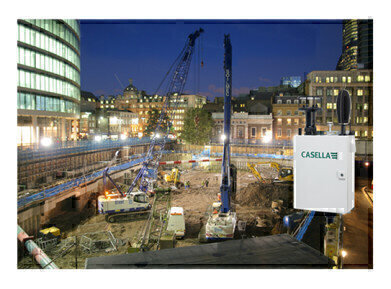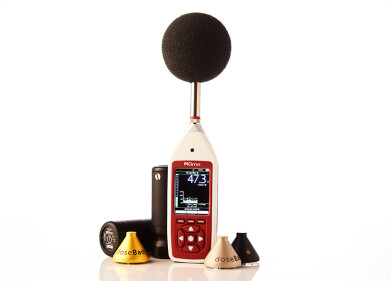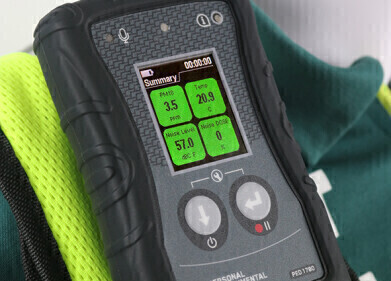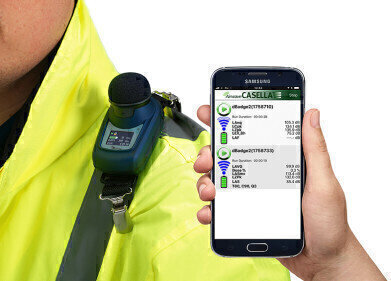Noise monitoring
Using boundary monitoring to identify potential hazards, ensure compliance and protect workers from health risks
Mar 25 2021
What is site boundary monitoring, and where is it used?
Site boundary or ‘fence line’ monitoring is used widely on construction sites and other high-risk locations including demolition projects, mines and quarries and environmental remediation sites. Boundary monitoring units are set up on the exterior perimeter of the worksite to monitor for potential hazards that might cause compliance issues for the site, or present a health risk to workers and site neighbours. It’s an essential part of the safety and risk management ecosystem of these sites, and helps control and mitigate potential environmental, health, and reputational risks.
What hazards can be monitored for?
Hazards that are typically monitored for include excess levels of dust, noise, vibration and, in some cases, Volatile Organic Compounds (VOCs). Volatile organic compounds include a variety of chemicals, some of which may have short- and long-term adverse health effects, and if these are present on a site or work their way into soil or groundwater they can present a hazard to future development or remediation of a work site or property.
Why is site boundary monitoring important?
There are two main aspects to this – health and compliance. From a compliance point of view, there are stringent legal and environmental controls surrounding levels of noise, dust and vibration that construction projects cannot exceed. Local environmental health bodies will require work sites to prove their regulatory and legal compliance through accurate reporting and data sets for given hazards over specific time periods.
Site-wide compliance is vital across the construction and demolition industries. Civic and legal responsibility to measure site emissions is backed by legislation and governing authorities. In the UK, sites will need to comply with their section 61 notices. These are a proactive measure that can save a contractor or developer time and money, improve environmental performance and prevent prosecution by keeping sites compliant with law and legislation[1]. Site monitoring must be recorded and reported on, and action taken if limits are exceeded – sites must be able to evidence compliance and maintain their reputations, and local communities must be considered. Alongside the human cost to health, fines of up to £20,000 ($30,000) per violation are possible if preventable noise and dust exceed agreed emissions levels, not to mention the long-term potential costs of a damaged business reputation.
What kinds of boundary monitoring equipment are available?
There are a variety of different solutions available for site boundary monitoring. Many are dedicated to specific individual hazards, including dedicated dust, noise or vibration monitoring systems. While a variety of different monitoring solutions can be employed and combined to give a full picture of site emissions and risks, increasingly project managers and occupational hygienists are turning to combined solutions, such as the Casella Guardian2.
These combined monitoring solutions bring together several real-time hazard monitoring devices in one enclosure, which can be easily installed at the edge of a site and, once powered, require minimal further interaction. Data capture continues seamlessly, and reporting can be entirely customised to suit the needs of the end user. These units can be easily relocated as site boundaries change or redeployed to new projects. Having a constant source of monitoring data gives projects a safety net in terms of accountability. Data is always on hand to prove that sites have been compliant, and give a full and accurate picture of the site’s potential emissions.
What are some important factors to consider when purchasing a boundary monitor?
Having a single unit that can measure parameters such as noise, dust and vibration (plus others) means only one unit to install, and one set of software with which to interact and learn, making the process easier and saving time. Once units are installed at a site boundary, they need very little interaction – ‘set it and forget it’, as the phrase goes. They enact monitoring 24/7 without input, running either from mains, battery, or even solar powered configurations.
Users can then receive automatically generated, customised reports to a set schedule, or when specific emissions limits are reached, preventing issues with surrounding residents and subsequent complaints to authorities. Limits can be used to trigger preventative measures such as dust suppression. Managers only need to check a single unit or combined data report, a more efficient method than checking multiple monitors and data sources. Alerts can be sent instantly via text, allowing sites to monitor levels around the clock and react quickly to reduce levels of dust or noise that exceed set limits and mitigate potential negative outcomes, and give site managers a reliable data source that can be accessed any time. Daily, weekly, or monthly reports can be sent directly to an email inbox in graphical or tablature format, and can even be supplied directly to local authority or environmental organisations – getting ahead of potential site-visits from inspectors.
These remote reports allow managers to check data streams across multiple units and multiple sites remotely, reducing physical time spent on site. By being able to provide data in email/file formats to environmental and local authority inspectors directly, this also reduces the time having to spend managing data and ensures environmental incidents are prevented, and data is reported in a timely manner.
Digital Edition
IET 35.2 March
April 2025
Air Monitoring - Probe Sampling in Hazardous Areas Under Extreme Conditions - New, Game-Changing Sensor for Methane Emissions - Blue Sky Thinking: a 50-year Retrospective on Technological Prog...
View all digital editions
Events
Apr 29 2025 Edmonton, AB, Canada
Apr 30 2025 Ankara, Turkey
May 06 2025 Nuremberg, Germany
May 10 2025 Karachi, Pakistan
May 11 2025 Vienna, Austria








_(4427399123)-(2).jpg)










